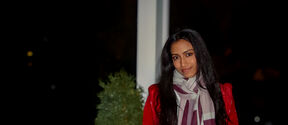Convenient wireless charging for home use

A new wireless charging system can charge devices placed anywhere within a ring around it. Existing systems transfer power in a specific direction or to a specific position. By providing a donut-shaped charging field, the new system offers a more convenient and reliable design for consumer use.
The main challenge in creating an omnidirectional charger has been that the strength of the charging field changes with location. This means that devices will charge inefficiently if they are in the wrong spot or aren’t oriented correctly. One approach to solve this is to create a charging field using several transmitter coils connected to several power sources, but this increases the complexity of the transmitter, making the system impractical. Other systems use feedback to properly orient the charging field, but the control systems are also complicated and expensive.
Researchers at Aalto University developed the new system to address these challenges. ‘We set out to create a simple, low-cost system using only a single power source,’ says Nam Ha-Van, the postdoctoral researcher who led the study.
The key to the new design is a cylindrical power coil. The wire at the top of the coil is wound in the opposite direction to the wire at the bottom of the coil, with a z-shaped bridge connecting them. Since the current flows through these windings in opposite directions, they produce complementary magnetic fields. One field flows out from the middle of the cylindrical coil, around the top winding, and back in through the top; the other flows out from the middle, around the bottom coil, and back in through the bottom.
This results in an even magnetic field around the middle of the charging coil. Receivers placed anywhere within that area charge efficiently, regardless of their position or orientation. ‘This was just a proof of concept,’ says Yining Liu, a doctoral candidate. ‘Now we can work to improve the efficiency – maybe to around 90% – and also the power.’
Based on simulations of the electromagnetic field around a consumer device, the researchers found that the level of exposure conformed to the requirements in safety regulations. However, further safety studies will be required before the technology can be used.
The new design complements recent work from the same research group which made it possible to transfer power to multiple, moving receivers in a charging area. The two technologies address different dimensions of the challenge of wireless charging: freedom of movement for industrial applications and free placement for consumer, tabletop devices.
The results have been published in IEEE Transactions on Industrial Electronics Journal
You can read the Open Access article by following this link.
More information:
Nam Ha-Van
Post-doctoral researcher
Aalto University
+358 50 5606 892
nam.havan@aalto.fi
New power transfer technology provides unprecedented freedom for wireless charging
Devices can be charged regardless of their position or orientation and even on the go.

Read more news

Aalto Inventors innovation training coming for hydrogen, quantum and microelectronics researchers this spring
Connect with industry and academic thought-leaders and gain widely applicable skills in communication, intellectual property, and business.
Start the year with new insights – apply for FITech's spring courses!
Deepen your knowledge with courses from Finnish universities of technology, designed to meet the demands of the working life and help deepen your expertise for free.
Combining studies in technology and business allows Kriti Bojja to navigate multiple career directions
Kriti Bojja is excited about the variety of career opportunities the Digital Systems and Design major will allow her to pursue






